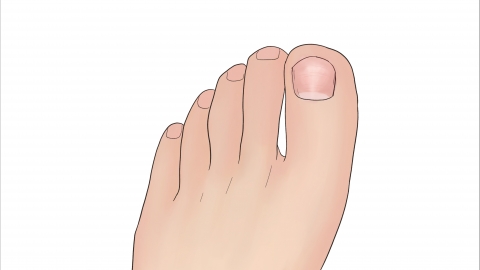What could be the reason for persistent pain after kicking a toe?
Generally, persistent pain in a toe after being kicked may be caused by soft tissue contusion, local hematoma formation, toe bone fissure, toe joint dislocation, or traumatic arthritis. If discomfort occurs, it is recommended to seek timely medical evaluation and treatment at a正规 hospital. Specific causes are analyzed as follows:
1. Soft Tissue Contusion
After a toe is kicked, soft tissues such as subcutaneous muscles and fascia may be damaged due to external force, causing rupture of local capillaries and resulting in pain and swelling. Minimize movement of the affected toe and avoid pressing on the injured area. Apply ice packs within the first 48 hours to reduce swelling; switch to warm compresses with a heated towel after 48 hours to promote healing.

2. Local Hematoma Formation
External impact can cause blood vessels under the skin of the toe to rupture and bleed, leading to blood accumulation (hematoma) that presses on surrounding tissues, causing ongoing pain. After injury, elevate the affected limb above heart level to promote blood return. For small hematomas, use alternating cold and warm compresses as described above. Avoid massaging the area yourself to prevent worsening bleeding.
3. Toe Bone Fissure
A strong kick or impact may cause a crack in the toe bone. Movement can stimulate surrounding nerves at the fracture site, causing persistent pain, often accompanied by limited toe mobility. Prompt medical attention is needed for splint immobilization. Under medical guidance, medications such as calcium carbonate D3 tablets, osteopeptide tablets, and ibuprofen sustained-release capsules may be taken. Avoid weight-bearing on the toe and schedule regular follow-ups to monitor bone healing.
4. Toe Joint Dislocation
Strong external force can alter the normal anatomical position of the toe joint, damaging ligaments and tendons around the joint, causing severe and persistent pain, often with visible toe deformity. Immediate medical attention is required for joint reduction (repositioning). After the procedure, the toe should be immobilized with a cast. Under medical supervision, medications such as Yunnan Baiyao capsules, diclofenac sodium enteric-coated tablets, and glucosamine hydrochloride capsules may be prescribed. Avoid moving the toe during immobilization.
5. Traumatic Arthritis
After a toe injury, damage to the joint cartilage combined with long-term wear can trigger inflammation, manifesting as persistent joint pain and swelling that worsens with activity. Under medical guidance, medications such as celecoxib capsules, chondroitin sulfate tablets, and sodium hyaluronate injections may be used. In severe cases, surgical debridement of the toe joint may be necessary. Avoid wearing tight shoes that compress the toes in daily life.
In daily life, pay attention to your surroundings during physical activity or walking to avoid toe injuries. Treat injuries promptly to prevent worsening complications. During recovery, wear loose, comfortable footwear to reduce pressure on the toes. Seek immediate medical evaluation if pain persists beyond one week or if toe deformity or numbness develops.






